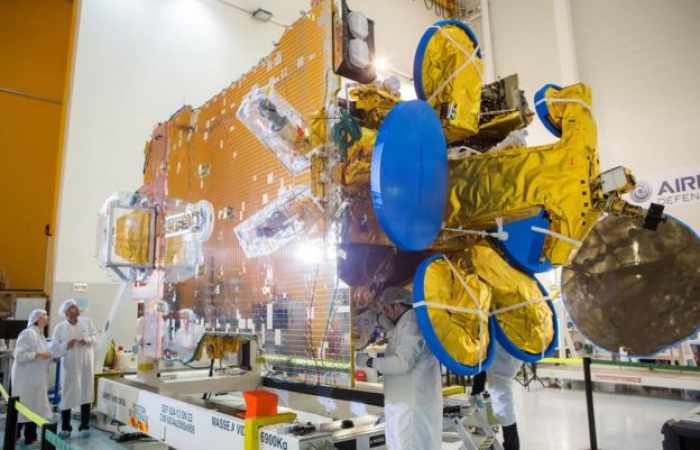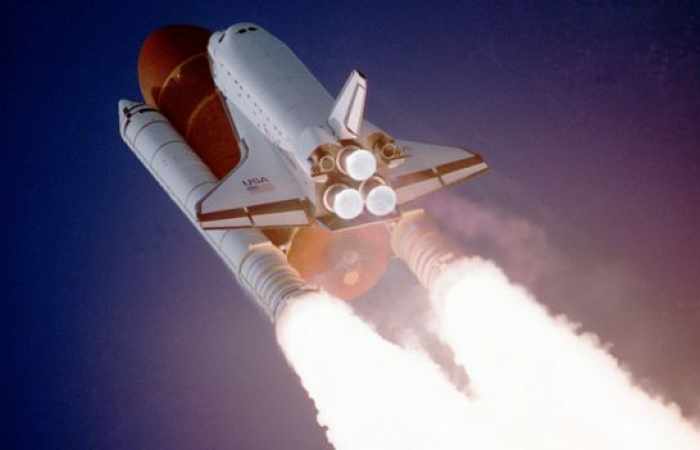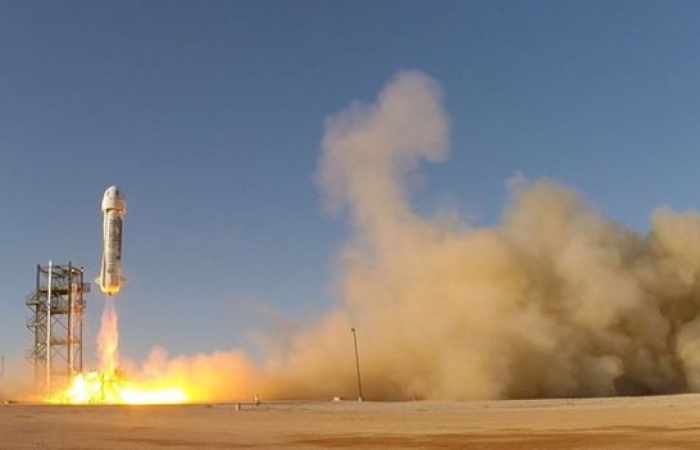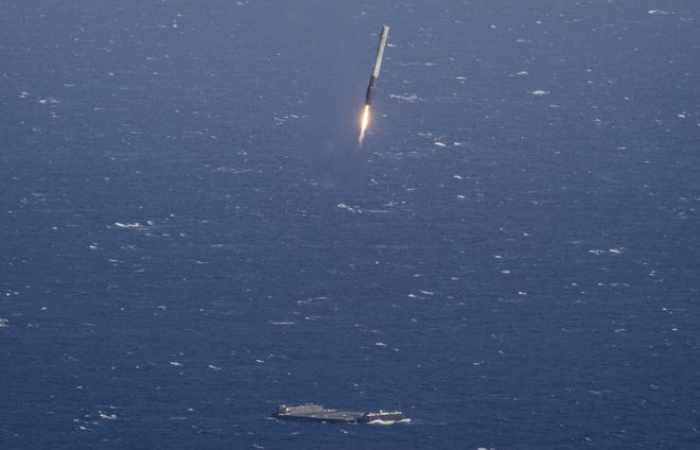But SpaceX has become adept at landing its boosters safely back on Earth after a mission.
Now, the firm is ready to put one of these "flight proven" vehicles on the launch pad again.
The window for a lift-off from Florida's Kennedy Space Center opens at 18:27 EDT (22:27 GMT; 23:27 BST).
The satellite passenger is the property of the Luxembourg operator SES.
Designated SES-10, this 5.3-tonne spacecraft, which was manufactured in the UK and France by Airbus, is booked to deliver a range of TV and telecom services to the Caribbean, Central and South America.

SES-10 was manufactured in the UK and France by Airbus Defence and Space
Only the lower segment - the first-stage - of the Falcon is "second hand". The upper-stage and the clamshell fairing that protects the satellite on the ascent are all new.
The first-stage was originally flown from Florida eleven months ago, to send cargo to the space station.
Once that job was done, the booster navigated its way back to a floating platform in the Atlantic where it made a propulsive landing on deployable legs.
Several months of detailed inspection followed, after which the stage was declared fit to go again.
It should have gone back up in October but the flight was postponed following the launch pad explosion of another of SpaceX's rockets in September.
Re-using stages is part of SpaceX's strategy to lower the cost of access to space, and SES is getting a discount off the normal launch price, which is advertised at $62m.
But although cost is a key driver here, so too is schedule.
At the moment, the opportunities to fly the big telecoms satellites into orbit are limited by the availability of capable vehicles. The commercial launch industry is constrained principally to just three major providers and when one of these has a problem, as SpaceX did with its September anomaly, the "pipeline" to orbit for everyone gets squeezed.

Space shuttle: The white strap-on boosters parachuted back to Earth to be used again
"This is not just an issue about money," emphasised Martin Halliwell, the chief technical officer of SES. "Will re-usability lead to cheaper prices? I hope so, but for us it's also about having a route to space," he told BBC News.
"We've been waiting for six months now to fly SES-10, and that's because there was no other alternative opportunity. If we can start getting the rocket companies looking toward re-usability and going down this path, we should have much more flexibility in being able to launch our various different missions."
Illustrating that point is the fact that SES will be trying to put up 10 satellites this year: SES-10, SES-15, SES-11, SES-16, SES-14, SES-12, and four satellites in its medium orbit constellation, O3b.
Already, the next mission after Thursday (SES-15) looks like it will be delayed because of strike action in French Guiana, the home of Europe's spaceport and launch provider Arianespace.
Obviously, reliability is a critical aspect to all this as well, and SES has had two individuals embedded at SpaceX to oversee the booster's evaluation. This work has satisfied the Luxembourg operator that Thursday's Falcon mission carries no additional risk. Certainly, no change has been required to the insurance package supporting the flight.
"We would not risk such an important spacecraft, with such huge investment, on top of any rocket that we didn't believe is actually going to make it correctly into orbit," said Mr Halliwell.
Getting away from expendable rockets has been a long quest. Famously, Nasa's space shuttle system was partially re-usable.
The white solid-fuel strap-on boosters, for example, were recovered after each mission and their casings re-used.
And yet the complexities of servicing the shuttle system after every flight swamped any savings.

Jeff Bezos' New Shepard sub-orbital system has launched and landed successfully five times
SpaceX hopes its simpler Falcon 9 rocket can finally deliver a practical commercial solution. It believes its technology will eventually permit rapid turnaround, with boosters flying multiple times before being retired.
Other players are following close behind. The Amazon entrepreneur Jeff Bezos already has a re-usable sub-orbital rocket and capsule system that he has successfully launched and landed five times.
Mr Bezos now plans a recoverable orbital rocket called New Glenn. And United Launch Alliance, which puts up the majority of America's national security payloads, is in the process of designing a new vehicle that will return its engines to Earth via parachute.
SpaceX will again seek to land Thursday's first-stage booster on a floating platform in the Atlantic. This will give the company's engineers further data on the durability of the Falcon's components and sub-systems.
















































